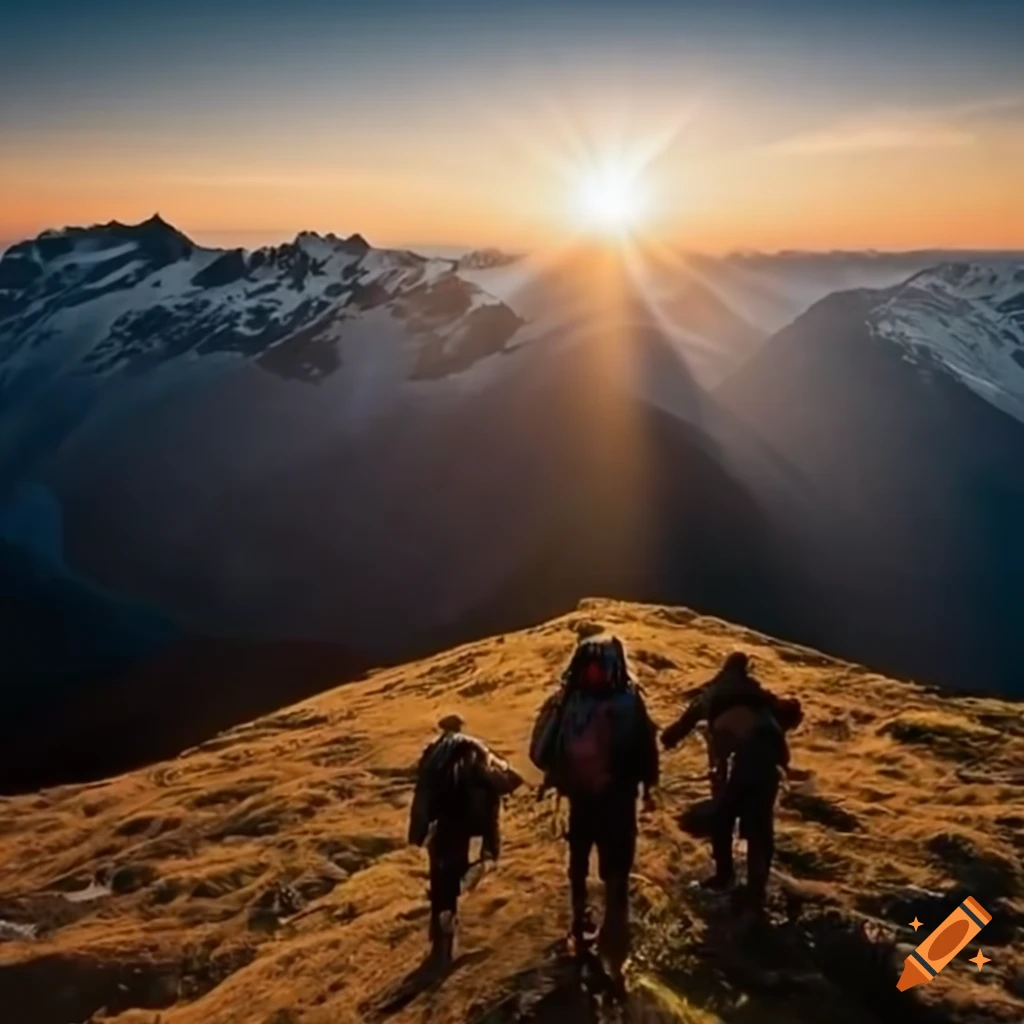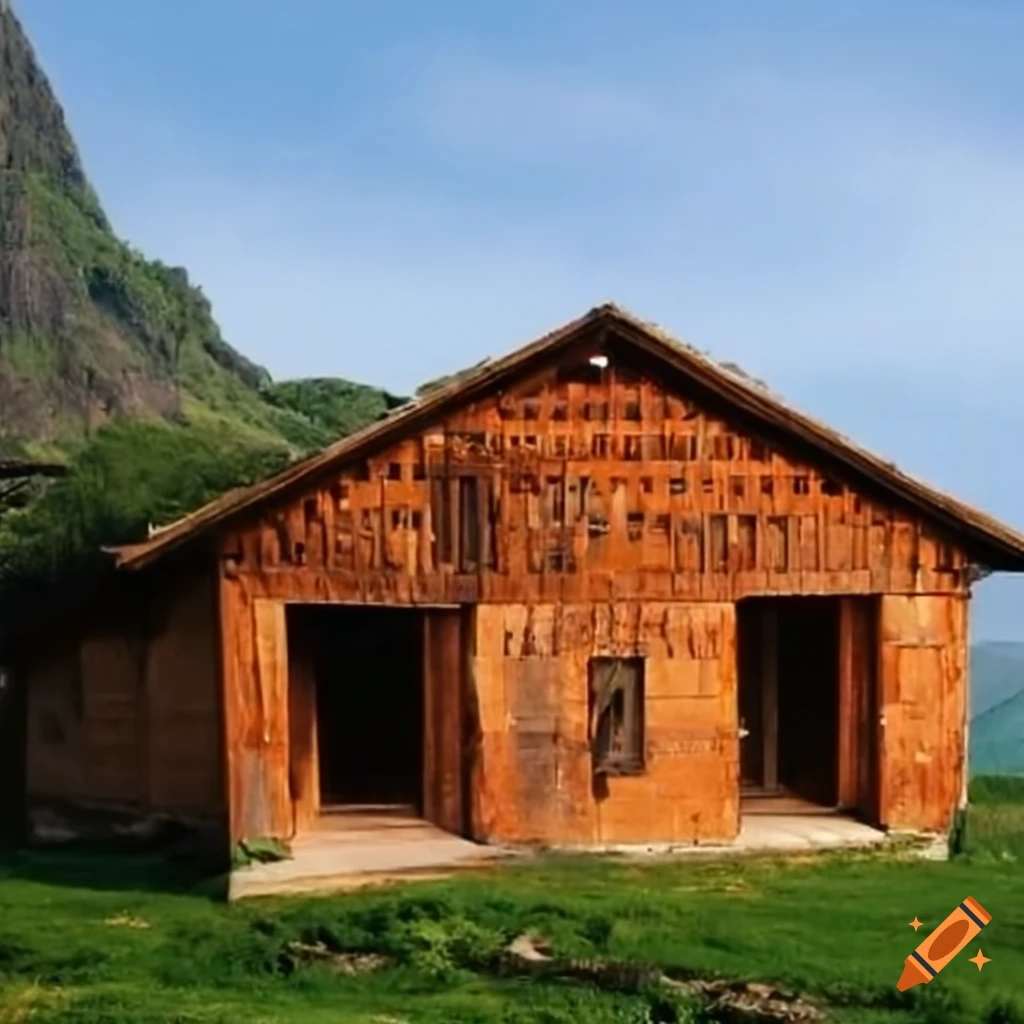Introduction to Adventure Travel
Adventure travel is a thrilling and dynamic form of tourism that attracts individuals seeking to push their personal boundaries, explore uncharted territories, and immerse themselves in unique cultures. Unlike conventional tourism, which often revolves around relaxation and comfort, adventure travel is characterized by its focus on physical activity, exploration, and the unknown. This form of travel appeals to those who crave the excitement of stepping outside their comfort zones and embracing the unexpected.
The allure of adventure travel lies in its ability to offer both physical and mental challenges. Whether it’s trekking through dense jungles, scaling towering mountains, or diving into the depths of the ocean, these experiences test one’s limits and foster a sense of accomplishment and personal growth. The thrill of conquering a difficult hike, navigating a remote river, or surviving in a rugged environment provides a unique sense of satisfaction that traditional travel experiences often lack.
Additionally, adventure travel offers an unparalleled opportunity to experience diverse cultures and landscapes. Adventurers often find themselves in remote regions, far from the beaten path, where they can engage with local communities and learn about their customs, traditions, and ways of life. This cultural immersion enriches the travel experience, providing a deeper understanding of the world and its myriad inhabitants.
Moreover, the exploration of uncharted territories is a significant draw for adventure travelers. The prospect of discovering hidden gems, whether they be secluded beaches, ancient ruins, or untouched wilderness, adds an element of mystery and excitement to the journey. This sense of exploration and discovery is a core component of what makes a place truly adventurous.
In essence, adventure travel is about more than just visiting new places; it is about embracing the challenges and rewards that come with venturing into the unknown. It is this spirit of adventure that drives people to seek out destinations that offer the promise of thrilling experiences, cultural enrichment, and the chance to push their personal boundaries.
Criteria for Determining the Most Adventurous Place
When identifying the most adventurous place in the world, several key criteria are considered to ensure a comprehensive evaluation. The first of these is geographical diversity. This encompasses a range of landscapes and terrains, from towering mountain ranges and expansive deserts to dense forests and vast oceans. A place with varied geography offers a wider array of adventure activities and experiences, catering to different interests and skill levels.
Another crucial factor is extreme weather conditions. Locations known for their challenging climates, such as intense heat, severe cold, or frequent storms, add an additional layer of difficulty and excitement for adventurers. The ability to navigate and survive in harsh weather is a true test of resilience and preparedness.
Physical challenges are also a significant criterion. These can include activities that require physical endurance, strength, and skill, such as rock climbing, white-water rafting, or long-distance trekking. A place that poses demanding physical challenges is often seen as more adventurous because it pushes individuals beyond their comfort zones.
The potential for unique experiences is another vital aspect. This could involve cultural encounters, historical explorations, or participation in traditional activities that are not found elsewhere. Unique experiences enrich the adventure by providing a deeper connection to the location and its heritage.
Lastly, the presence of wildlife and natural wonders adds to the allure of an adventurous destination. Regions teeming with diverse flora and fauna, as well as striking natural formations like waterfalls, volcanoes, or coral reefs, offer unparalleled opportunities for exploration and discovery. Interactions with wildlife and the chance to witness awe-inspiring natural beauty elevate the overall adventure experience.
By considering these criteria—geographical diversity, extreme weather conditions, physical challenges, potential for unique experiences, and the presence of wildlife and natural wonders—we can effectively determine the most adventurous place in the world.
Top Contenders for the Most Adventurous Place
When it comes to seeking adventure, the world offers an array of extraordinary destinations that cater to various tastes and thrill levels. Below, we present a list of top contenders for the title of the most adventurous place in the world. Each location is briefly described, highlighting its unique features and the reasons why it is considered a prime spot for adventure travel.
Antarctica
Antarctica, often dubbed the “final frontier,” is a haven for explorers and adventure seekers. This icy expanse, with its towering glaciers and vast icebergs, offers a surreal landscape that is both breathtaking and challenging. Activities such as ice climbing, kayaking amidst ice floes, and traversing the icy terrain on foot or by ski provide an unparalleled experience. The extreme weather conditions and isolation make it a top contender for the most adventurous place in the world.
The Amazon Rainforest
The Amazon Rainforest, often referred to as the “lungs of the Earth,” is a vast and dense jungle teeming with wildlife and biodiversity. Adventure enthusiasts can embark on guided treks, navigate the intricate waterways by canoe, or engage in wildlife spotting and birdwatching. The sheer size of the Amazon, coupled with its rich ecosystem and the challenge of navigating through dense foliage and unpredictable weather, makes it an adventurer’s paradise.
The Himalayas
The Himalayas, home to the world’s highest peaks including Mount Everest, are synonymous with high-altitude adventure. Trekkers and climbers from around the globe are drawn to its towering summits and rugged terrain. Whether undertaking the Everest Base Camp trek, scaling lesser-known peaks, or exploring remote valleys, the Himalayas offer a plethora of challenging and exhilarating experiences. The region’s cultural richness and stunning landscapes further enhance its appeal as a premier adventure destination.
The Sahara Desert
The Sahara Desert, stretching across North Africa, is the world’s largest hot desert. Its vast stretches of sand dunes, rocky plateaus, and unforgiving climate provide a unique adventure setting. Activities such as camel trekking, sandboarding, and 4×4 desert safaris allow adventurers to immerse themselves in this austere yet captivating environment. The stark beauty of the desert, combined with the challenge of surviving its harsh conditions, makes the Sahara a standout contender for the most adventurous place in the world.
These top contenders showcase the diverse and thrilling options available for adventure travel, each offering unique experiences that cater to different aspects of adventure and exploration.
In-Depth Look at the Most Adventurous Place: Antarctica
Antarctica stands as the epitome of adventure, offering an unparalleled experience for thrill-seekers and nature enthusiasts alike. The continent’s harsh climate, characterized by extreme cold, powerful winds, and vast stretches of ice, creates a setting that tests the limits of even the most seasoned adventurers. Temperatures can plunge below -60 degrees Celsius, and the sun does not set for months during the summer, only to vanish entirely in the winter, plunging the continent into an extended period of darkness. These conditions, combined with Antarctica’s remote location, make it one of the most challenging terrains on Earth.
The opportunities for adventure in Antarctica are as diverse as they are thrilling. Ice climbing on the continent’s towering glaciers presents an exhilarating challenge, offering climbers the chance to scale breathtaking ice formations. For those who prefer to stay on the ground, cross-country skiing across the endless white expanse provides a physically demanding yet deeply rewarding experience. The continent’s unique landscape, with its vast ice fields and snow-capped peaks, ensures that every journey is a visual spectacle.
Wildlife encounters add another layer of excitement to the Antarctic adventure. The continent is home to a variety of species adapted to its extreme environment, including emperor penguins, Weddell seals, and numerous seabirds. Observing these creatures in their natural habitat is a rare and unforgettable experience. As adventurer Henry Worsley once remarked, “The beauty and the brutality of Antarctica are what draw us back. It’s a place where you feel truly alive.”
Personal anecdotes from those who have braved Antarctica’s formidable conditions highlight the sheer magnitude of the adventure. Renowned explorer Sir Ernest Shackleton’s harrowing journey across the continent in the early 20th century remains a testament to human endurance and the spirit of exploration. Modern adventurers continue to be inspired by Shackleton’s legacy, pushing their own boundaries in this ultimate frontier. Whether through the lens of history or personal experience, Antarctica remains an enduring symbol of adventure and discovery.
Challenges and Risks of Traveling to Antarctica
Traveling to Antarctica presents a plethora of challenges and risks that make it one of the most formidable destinations for adventurers. The extreme temperatures are perhaps the most immediate concern. During the austral summer, temperatures can still plummet below freezing, while winter temperatures can drop to a bone-chilling -60°C or lower. This requires travelers to be equipped with specialized gear designed to withstand such severe cold, including insulated clothing, thermal layers, and suitable footwear.
Isolation is another significant challenge. Antarctica is one of the most remote places on Earth, with limited access to communication and emergency services. The isolation can be psychologically taxing, as the vast, empty landscapes and prolonged periods of darkness during the winter months can lead to feelings of loneliness and disorientation. Furthermore, medical facilities are sparse, making it crucial for travelers to be in good health and to carry a comprehensive first aid kit. Potential health risks include frostbite, hypothermia, and snow blindness, each requiring immediate attention to prevent serious consequences.
The physical demands of the Antarctic environment cannot be understated. Navigating through its icy terrains, often covered in deep snow and treacherous ice, requires a high level of physical fitness and endurance. Adventurers must be prepared for strenuous activities such as hiking, climbing, and even swimming in frigid waters. Proper preparation is key; this includes physical training, understanding the terrain, and being mentally prepared for the harsh conditions.
Moreover, the environmental impact is a growing concern. Travelers must adhere to strict guidelines to minimize their footprint, ensuring the pristine nature of this unique ecosystem is preserved. Compliance with environmental protocols, such as the Antarctic Treaty System, is obligatory and essential for the protection of its fragile environment.
In summary, traveling to Antarctica is a venture that demands extensive preparation, both physically and mentally. It poses significant risks, but with proper planning and respect for the environment, it can be an unparalleled adventure of a lifetime.
Preparing for an Antarctic Adventure
Embarking on an Antarctic adventure requires meticulous planning and preparation due to the continent’s extreme conditions and remoteness. One of the foremost considerations is choosing the right time of year to visit. The Antarctic summer, from November to March, is the optimal period as temperatures are relatively milder, and daylight extends up to 24 hours, providing ample opportunity for exploration.
Securing the necessary permits and travel arrangements is another critical step. Most travelers join organized expeditions operated by specialized tour companies, which often include permit arrangements in their packages. Independent travelers must secure permits through appropriate national authorities, which can be a complex process involving strict environmental regulations to protect the fragile ecosystem.
Packing the essential gear is vital for a successful adventure. Layering is crucial to combat the harsh cold; thermal undergarments, insulated jackets, waterproof outer layers, and sturdy boots are indispensable. Accessories like gloves, hats, and UV-protective sunglasses are equally important to protect against the intense sun and biting winds. Additionally, a good quality backpack and a waterproof pack cover are recommended to keep belongings dry and secure.
Understanding the physical fitness requirements is essential, as Antarctic expeditions often involve strenuous activities such as hiking on icy terrain and kayaking in frigid waters. A good level of physical fitness ensures safety and enhances the overall experience. Engaging in regular cardiovascular and strength training exercises in the months leading up to the trip can help prepare for the physical demands.
Expert tips can be invaluable in preparing for an Antarctic adventure. Experienced travelers emphasize the importance of flexibility and a positive mindset, as weather conditions can be unpredictable and may necessitate changes in itinerary. They also recommend familiarizing oneself with the principles of Leave No Trace to minimize environmental impact.
Experiences and Activities in Antarctica
Antarctica stands as the epitome of adventure, offering a myriad of exhilarating experiences and activities that captivate the hearts of thrill-seekers. One of the most popular pursuits is ice climbing. Scaling the magnificent ice walls and glaciers provides an adrenaline rush like no other. Climbers are often treated to breathtaking vistas of the icy landscape, making the strenuous effort worthwhile.
Snowboarding in Antarctica is another activity that draws adventurers from around the globe. The continent’s pristine slopes, untouched by commercial tourism, offer an unparalleled experience. Snowboarders glide down vast, powdery expanses, often accompanied by the awe-inspiring backdrop of towering ice formations and the occasional sight of a curious penguin.
For those who prefer water-based activities, kayaking among icebergs presents a unique and serene way to explore Antarctica’s frozen waterways. Paddling through the icy waters, adventurers can navigate around towering icebergs and witness the diverse marine life, including seals and whales. This activity not only provides a physical challenge but also an opportunity for quiet reflection amidst the stunning natural beauty.
Wildlife watching is a quintessential Antarctic experience. The continent is home to an array of unique species, including various types of penguins, seals, and sea birds. Observing these creatures in their natural habitat is a humbling and awe-inspiring experience, offering a glimpse into the delicate ecosystem of this remote region.
Lastly, visiting research stations offers a fascinating insight into the scientific endeavors taking place in Antarctica. These stations, often manned by international teams, are hubs of research on climate change, glaciology, and marine biology. Tourists can learn about the critical work being conducted and appreciate the challenges faced by scientists living and working in such harsh conditions.
These diverse activities collectively contribute to Antarctica’s reputation as the most adventurous place in the world, providing unparalleled experiences that remain etched in the memories of those fortunate enough to undertake them.
Conclusion
Antarctica’s unparalleled landscapes and extreme conditions make it an unrivaled destination for adventure enthusiasts. From the majestic icebergs and pristine snow to the unique wildlife and challenging expeditions, every aspect of this remote continent offers a sense of wonder and excitement. Whether you’re captivated by the opportunity to witness the ethereal beauty of the Southern Lights or intrigued by the chance to explore the desolate yet captivating terrain, Antarctica stands out as the most adventurous place in the world. The combination of natural beauty, scientific intrigue, and the sheer challenge of navigating such an extreme environment makes it a bucket-list destination for those seeking the ultimate adventure.
FAQs
1. When is the best time to visit Antarctica?
The optimal time to visit Antarctica is during the austral summer, which spans from November to March. During these months, temperatures are relatively milder, the days are longer, and wildlife activity is at its peak, offering the best conditions for exploration and photography.
2. Is it safe to travel to Antarctica?
Traveling to Antarctica is generally safe, provided you join a reputable expedition team. Operators adhere to strict safety guidelines and protocols to ensure the well-being of all participants. However, due to the remote and harsh environment, travelers should be prepared for challenging conditions and follow all safety instructions meticulously.
3. How much does a trip to Antarctica cost?
The cost of an Antarctic expedition varies widely based on the itinerary, duration, and level of comfort. On average, travelers can expect to spend anywhere from $5,000 to $15,000 or more. This typically includes transportation, accommodation, meals, and guided activities. It’s advisable to budget for additional expenses such as gear, insurance, and personal items.
4. How can I join an expedition to Antarctica?
To join an expedition to Antarctica, you can book through specialized travel agencies and tour operators that offer organized trips. These expeditions are often led by experienced guides and include various activities such as ice trekking, wildlife viewing, and scientific exploration. Researching and selecting a reputable operator is crucial for ensuring a safe and enriching experience.



